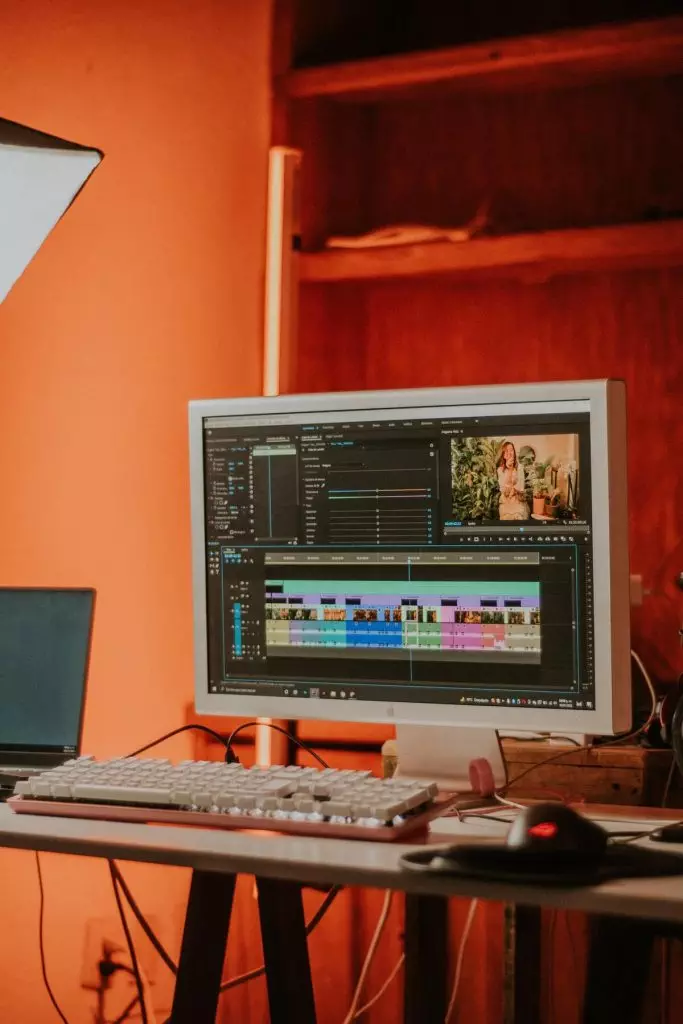Video marketing has transformed how businesses interact with customers and build brand presence. Companies often collaborate with video marketing agencies to create high-quality video content to stand out in this crowded digital world. While video production might seem straightforward, editing is where the magic happens. However, it can be quite a tedious task if not planned correctly.
Creating high-quality, creatively enchanting, easy-to-edit videos is more important now than ever. Right from explainer videos to animated gems, video marketing agencies weave together stunning visuals and strategic storytelling, taking your marketing campaign from ordinary to extraordinary.
But what’s the secret recipe for brewing such alluring videos? Why do your favorite video content pieces stand apart from others?
The Basics — What Makes A Good Edit?
A well-edited video is not just a compilation of shots; it’s a carefully crafted visual story that charms the audience. As we dive into what makes a good edit, keep in mind the rule of thumb – visual harmony and narrative clarity should always take precedence. Here are some fundamental aspects that contribute to a good edit:
1. Smooth Transitions
Significant transitions provide a seamless movement from one scene to another. There are different types of cuts, wipes, and fades to help you craft smooth transitions, such as:
- Cut: The most common change where one clip instantly replaces another.
- Crossfade or Dissolve: A gradual transition from one scene to the next.
- Wipe: One shot replaces another by travelling from one side of the frame to another.
2. Pacing and Timing
Pacing can make or break your video narrative. Careful timing can provide highs and lows, suspense, or excitement. Consider these points:
- Adjust the pace according to the narrative mood. Fast-paced for action scenes, slow-paced for emotional or dramatic moments.
- Use music and sound effects effectively to set the pace.
- Use pauses and breaks to let your audience absorb the information.
3. Continuity and Narrative Clarity
Continuity editing aims at maintaining a continuous and straightforward narrative. Here are some tricks:
- Match Cut: A cut from one shot to another where both images match graphically or thematically.
- Cut on Action: Cutting while the subject is in motion can make the cut almost seamless.
- Shot Reverse Shot: A technique used through shooting over-the-shoulder angles in conversation scenes.

4. Contextual Editing Styles
Align your editing style with the narrative context. Whether it’s a fast-paced music video needing quick cuts or a documentary requiring long, thoughtful shots, always edit with the context in mind.
5. Color Correction and Grading
Color Correction and Grading can give your video a professional finish. Consider these tips:
- Correcting any color issues and inconsistencies and achieving a balance.
- Grading for aesthetic appeal, mood setting, and creating visual harmony across scenes.
6. Sound Editing
Last but not least, sound editing plays a vital role. Keep these points in mind:
- Balancing the audio levels for an even sound.
- Clearing up any sound issues like background noises.
- Adding sound effects and music at appropriate moments.
A good edit is subjective and hugely depends on your project’s style and genre, but by mastering these basic principles. You can enhance your storytelling abilities, making your videos more engaging and immersive. Consider each cut an opportunity to emotionally resonate with your audience and keep them invested in your story.
Video Production Process — Best Practices For Marketing Services
Regarding video production, shooting is not just a push of the button; it’s a ballet of technology, creativity, and marketing acumen. Video marketing agencies face the demanding task of converting brands’ strategies into creative videos that captivate audiences—the secret lies in skill, technique, experience, and the observance of best practices during production.
Guiding Principles For Shooting A Video
While the production process can vary according to the type of video, these fundamental guiding principles stay true to every video creation:
1. Composition and Framing: Framing your subject expertly can result in cinematic, professional-looking footage. Practices such as the rule of thirds and using leading lines facilitate better composition.
2. Lighting: No post-production editing can salvage poorly lit footage. Prioritize natural light where possible, but don’t shy away from using artificial lights to enhance your scenes.
3. Audio Quality Matters: Pay as much attention to the audio as the video. A high-quality video with poor audio can quickly lose the audience’s interest.
4. Variety of Shots: A mix of different shot types, like broad, medium, and close-ups, can give your project a dynamic feel and make it more engaging.
5. Consistent Technical Settings: Ensure consistent camera settings throughout the shoot to offer a uniform look in your video.
Insider Tips On Getting The Best Footage For Easy Edits
Gathering the best footage from a shoot doesn’t just make the final video more compelling; it can make the post-production process more comfortable and faster. Here are some insider tips to help you achieve that:
1. Plan Thoroughly: Plan each shoot’s details: scouting the location, choosing the time of day, pre-visualizing shots, and making a shot list or storyboard to guide a smoother production flow.
2. Shoot for the Edit: Visualize how each shot will fit into the final edit and try shooting additional B-roll footage to bridge gaps or smooth transitions.
3. Rolling a Few Seconds Extra: This extra footage before and after each shot can be a lifesaver in editing. It gives more flexibility to smooth out transitions, add effects, or have more choices for the best part of the scene.
4. Maintaining Continuity: Be consistent with shot sequencing, camera angles, and subject positioning. It can ensure seamless transitions and scenes that flow more naturally.
The production process is the phase where the video marketing service’s creative juices genuinely come into play. By using best practices in shooting and gathering footage, agencies can craft video content that not only ‘wows’ the audience but simplifies the work for their editors.

Post-production — Expert Editing Advice
Once your video has been shot, you’re only halfway through the journey. Post-production is where the threads of video production are woven together to create the final, consumable content. This stage is equally as critical as the pre-production and production processes.
Tools And Software Commonly Used
The digital age has seen the proliferation of diverse software tools, each tailored to different needs and proficiency levels of video content creation. Equipping oneself with the most effective tools can significantly streamline the editing process. Here are several popular video editing tools used by top video marketing agencies:
- Adobe Premiere Pro is an industry-standard software for editing everything from short clips to full-length films. Its robust capabilities, integration with other Adobe software, and compatibility with various file formats make it a popular choice.
- Final Cut Pro: A favorite among Apple users, Final Cut Pro offers powerful editing tools in a user-friendly interface.
- DaVinci Resolve: Besides being a top-notch color grading tool, it offers a robust timeline for precision editing.
- After Effects: Often bundled with Premiere Pro, After Effects is perfect for incorporating video effects or creating animated content.
Techniques For A Seamless Edit
Professional video marketing agencies use creative and technical editing techniques to create a seamless video. Here are a few pointers archived from years of expert video production:
- Select the Best Clips: Always choose the best footage available. A good video starts with good content.
- Maintain Continuity: Preserve the sanity of the sequence while editing. Remember, your audience wasn’t there during the shooting.
- Pace Appropriately: Your video’s rhythm should sync with your content’s mood, theme, and objective. A well-paced video holds the viewer’s attention while contributing to the narrative.
- Color Grade: Color grading can set the mood and aesthetic of your video. Ensure to be subtle and consistent.
- Use Transitions Wisely: Avoid overdoing transitions. Use them smartly to smooth out jumps and aid in visual storytelling.
In essence, investing time and resources in thorough video content creation and opting for professional video editing services can set your product or service apart from others while propelling your business toward its desired outcome. Casual use of video for marketing purposes is not enough. Instead, embrace video marketing as a vital component of your digital marketing services and ensure it aligns with your overall marketing strategies.





0 Comments